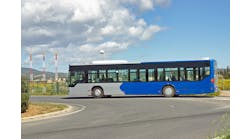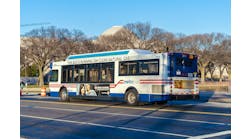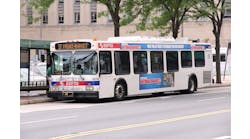Americans took 9.9 billion trips on public transportation in 2018, according to a report released this week by the American Public Transportation Association (APTA).
Compared to public transit ridership in 2017, there was a 2% decrease in ridership. Compared to 2017, commuter rail ridership in 2018 increased by 0.4% and demand response (paratransit) ridership increased by 2.1%. From 1995-2018, public transit ridership grew by 27%, surpassing the U.S. population, which grew at 23%. Additionally, passenger miles traveled on public transportation grew by 39%. This is more than the growth of vehicle miles traveled on the roads, which grew by 33%.
Ridership increases on public transportation happened in small and large communities nationwide. For example, Metro Transit (Minneapolis, Minn.) also saw ridership records in 2018 on its light-rail lines and the Bus Rapid Transit line. Reasons for these record ridership increases include the attractiveness of fast, frequent and reliable service; the result of continued transit-oriented development along these transitways; several large events, including the Super Bowl; and significant road construction on one of the region’s busiest highways which has led some travelers to take light-rail service.
Another example is the MTA Long Island Rail Road (New York City), which carried more riders in 2018 than in any year in nearly seven decades; its ridership is the highest since 1949. New York’s improving economy and changing demographic trends contributed to this growth. In addition, increases in reverse-peak commutes and non-work trips, such as shopping or going to entertainment venues, helped to bolster this modern record-breaking figure.
Nationally, commuter rail ridership increased in 18 out of 31 transit systems while overall ridership increased by 0.41%. With a new rail line that opened in August 2017, commuter rail in San Rafael, Calif., saw an increase of 146.5%. Light rail (modern streetcars, trolleys, and heritage trolleys) ridership increased in nine out of 28 transit systems while overall ridership decreased by 3%. Systems that showed double-digit increases in 2018 were in the following cities: Tampa, Fla. (50%); Charlotte, N.C. (41.1%); and Seattle, Wash.—King County DOT (19.0%). Heavy-rail (subways and elevated trains) ridership decreased nationally by 2.6%. However, heavy rail in the following cities showed ridership increases for 2018: San Juan, P.R. (7.4%) and Philadelphia (1.9%). Bus ridership decreased nationally by 1.8%.
----------
Source: APTA



